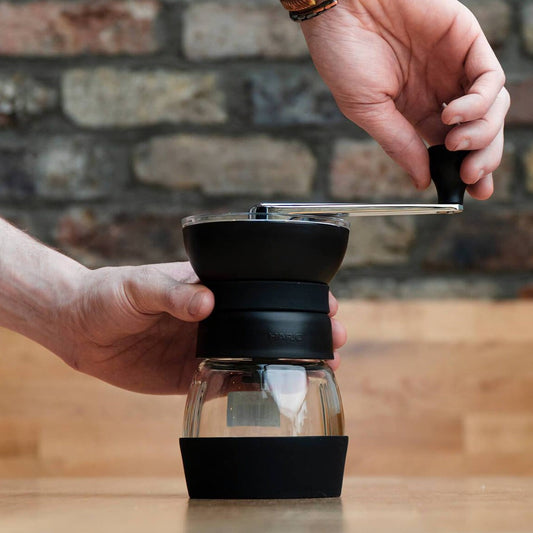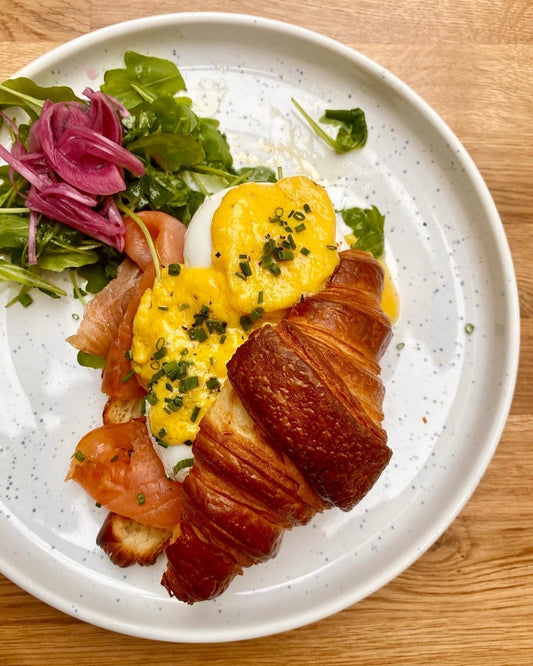Arabica coffee (Coffea arabica) is the most widely consumed coffee variety, accounting for 60-65% of global coffee production.
Favoured by specialty coffee enthusiasts, Arabica is prized for its smooth texture, balanced acidity, and nuanced flavours, often featuring fruity, floral, and sweet notes.
But what makes Arabica coffee so special? Keep reading and find out more!
Where is Arabica coffee grown?
Arabica coffee thrives in specific environmental conditions, making countries near the equator, particularly those with volcanic soil and stable rainfall, ideal for cultivating high-quality beans. The combination of mild temperatures, ample shade, and rich, well-draining soil contributes to the unique flavours and aromas of Arabica coffee.
Some of the world’s leading Arabica-producing countries include:
- Brazil – The largest Arabica producer, known for its smooth, nutty coffee.
- Colombia – Famous for balanced, fruity, and sweet flavours.
- Ethiopia – The birthplace of Arabica, known for its floral and wine-like notes.
- Kenya – Produces bold, citrusy Arabica with bright acidity.
- Honduras – A rising star in specialty coffee production.
- Guatemala – Offers complex, chocolatey and spicy profiles.
How Arabica coffee is grown and cared for
Arabica coffee plants are delicate and require careful cultivation to thrive.
Some essential care techniques include:
Altitude considerations – high-altitude regions with cool climates, ideally between 600–2,000 meters above sea level, lead to slower cherry maturation, resulting in better flavour complexity.
Temperature control – Arabica grows best in temperatures between 15°C–24°C ensuring smooth acidity and balanced sweetness.
Pest and disease management – Arabica is more susceptible to pests and diseases than Robusta, requiring stringent monitoring.
Farmers in Ethiopia, Colombia, and Central America often practice hand-picking, ensuring only ripe cherries are harvested for higher-quality production.
Global production volume of Arabica coffee
In recent years, annual Arabica output has ranged between 80-100 million bags, depending on climate conditions and market demand.
Leading Arabica producers include:

Despite its dominance, climate change and disease threats pose challenges to Arabica cultivation, leading to research into resilient hybrid varieties.
Read more about hybrid varietals in our blog about coffee trends and discover the latest innovations that are shaping the future of the industry.
Arabica coffee varieties
Arabica coffee boasts a diverse range of varieties, each offering unique flavours and characteristics shaped by their growing conditions.
Original Arabica varieties:
- Typica – The most traditional, smooth, and balanced Arabica variety.
- Bourbon – A mutation of Bourbon, sweet and complex, often found in Latin America.
From them, there are numerous sub-varieties, each offering distinct flavour characteristics:
- Caturra – A natural mutation of Bourbon, offering bright acidity.
- Geisha (Gesha) – Highly prized for floral, tea-like qualities.
- SL28, SL14 and SL34 – Kenya’s famous high-altitude coffee varieties.
Each variety flourishes a diverse sensory experience for coffee lovers worldwide.
Arabica coffee flavours and preparations
Arabica is known for its smooth, aromatic, and complex flavours compared to other coffee types.
Common tasting notes include:
- Floral & Fruity: Ethiopian and Kenyan Arabicas often have jasmine, berry, and citrus flavours.
- Chocolate & Nutty: Brazilian and Colombian Arabicas carry caramel, chocolate, and almond notes.
- Wine-like & Spicy: Yemeni and Guatemalan Arabicas may have red wine, cinnamon, and cocoa qualities.
Popular preparation methods to showcase Arabica’s rich flavours:
- Pour-over (Hario V60, Chemex) – Enhances clarity and complexity.
- French press – Brings out body and depth.
- Espresso – Highlights bright acidity and crema.
- Cold brew – Smooth, naturally sweet flavour with low acidity.
Arabica vs. Robusta
Coffee Arabica and Robusta (Conilon) are two primary coffee species, but they differ in taste, caffeine content, and cultivation:

Arabica coffee is prized for its delicate and refined flavours, while Robusta (Conilon) is often used in stronger espresso blends and instant coffee.
The future of Arabica lies in innovation and ethical farming, ensuring coffee lovers enjoy exceptional beans with environmental consciousness.
Want to dive deeper into coffee origins, market, and bean-to-cup production?
Check out our blog and find out more!
Arabica coffee remains the gold standard in the coffee world, loved for its sophisticated flavours, diverse varieties, and global appeal.
Whether enjoyed as an Ethiopian pour-over, a Colombian espresso, or a Brazilian cold brew, Arabica continues to shape coffee culture worldwide.
What’s your favorite way to enjoy Arabica coffee?
Let’s celebrate the world’s most beloved bean together!
☕






